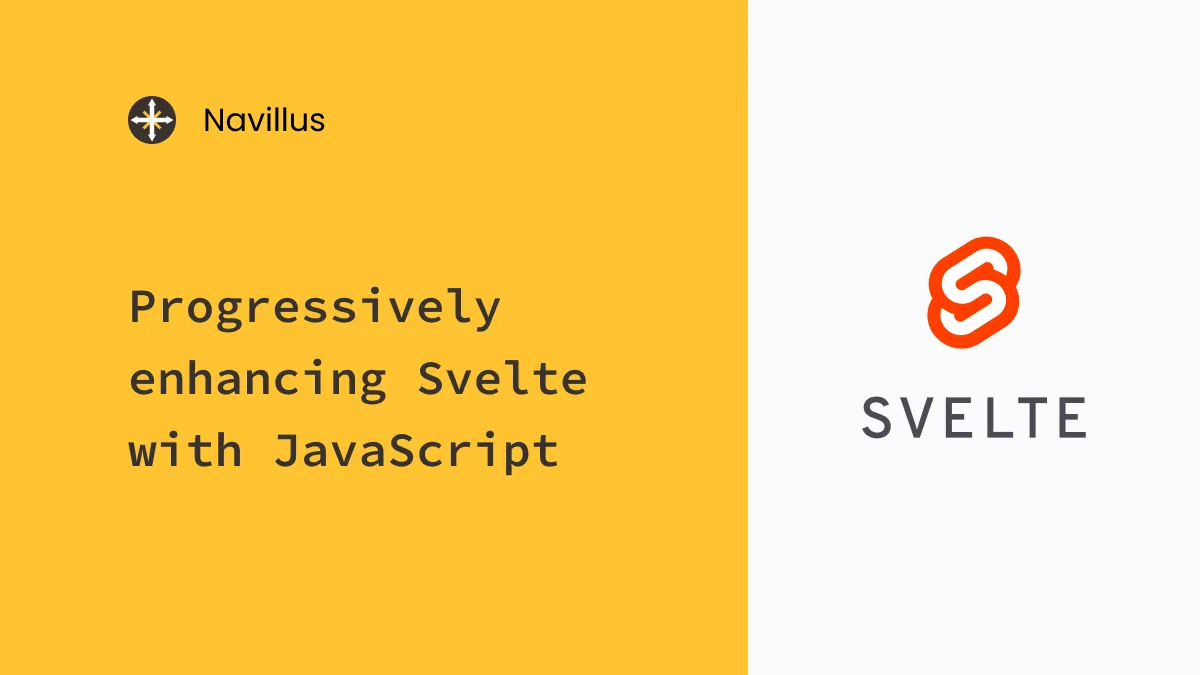Progressively enhancing Svelte with JavaScript
5 min read
That's right! Your site built with a JS framework with client-side code can still support users with JS disabled.
We’ve all heard about “mobile first” designs, but what about JavaScript last? It’ll need a catchier name to really stick, but many of us ignore how important it is that basic site functionality works even if JavaScript is disabled or has failed. Browsing the web with JavaScript disabled can be a real pain but it happens more then you’d expect.
My trusty Kobo Aura H20 has a browser in it, but JavaScript is disabled and frankly there’s no way the hardware could handle modern JS-heavy sites. Ride a subway in New York and you’ll quickly realize how spotty your cell signal can be, and how broken a site will be if the markup loaded but the 1.3MB of JavaScript didn’t finish before your connection dropped out.
tl;dr; Click here for a working example in the Svelte REPL. Or try out the menu on this site - disable your Javascript and shrink the window down to get the mobile view, the menu still works!
Don’t break your mobile menu
The hamburger menu is still king of mobile navigation designs, for better or worse. With a hidden menu, the last thing you want is for a visitor to not even be able to move around your site because they chose to disable JS. Even worse, if your site hits an unhandled exception that might break your JavaScript entirely.
The menu is almost certainly going to be interacted with, making design and animations a high priority there. The key is to build your menu so that it works with HTML and CSS only. Your JavaScript should enhance the menu with things like notification badges or animations that can’t be done well in CSS.
Learn by example
We’ll take a look at how this can be done in Svelte, but the same concepts can be applied to any framework.
Go ahead and try a working example right here, this site’s menu works similarly. Once scripts are loaded the menu takes advantage of Svelte’s built in slide transition. Disable JS in your browser though and our menu still works - it doesn’t animate in but visitors can open and navigate around no problem.
A basic header in Svelte
<script>
import { slide } from 'svelte/transition'
let menuOpen = false
</script>
<header>
<div class="header__top">
<h1>Navillus</h1>
<button on:click={() => menuOpen = !menuOpen}>
☰
</button>
</div>
{#if menuOpen}
<nav transition:slide>
<!-- NAV LINKS GO HERE -->
</nav>
</header>Nothing too crazy going on here yet. If you aren’t familiar with Svelte, transition:slide adds an entry and exit animation to the <nav> element.
Hide/show a menu without JS
HTML checkboxes have a pseudo selector for :checked, let’s take advantage of that to show/hide our menu from CSS.
<header>
<div class="header__top">
<h1>Navillus</h1>
<label for="toggle">☰</label>
</div>
<input id="toggle" type="checkbox" class="sr-only"/>
<nav>
<!-- NAV LINKS GO HERE -->
</nav>
</header>
<style>
#toggle ~ nav {
display: none;
}
#toggle:checked ~ nav {
display: block;
}
</style>What’s going on there exactly? Instead of a <button> there’s a <label> tied to the checkbox. In CSS, the nav element is hidden by default and only shown when the checkbox is :checked.
The best of both worlds
<script>
import { onMount } from 'svelte'
import { slide } from 'svelte/transition'
let menuOpen = true
let mounted = false
onMount(() => {
menuOpen = false
mounted = true
})
</script>
<header>
<div class="header__top">
<h1>Navillus</h1>
<label for="toggle">☰</label>
</div>
<input id="toggle" type="checkbox" class="sr-only" class:js={mounted} bind:checked={menuOpen} />
{#if menuOpen}
<nav>
<!-- NAV LINKS GO HERE -->
</nav>
{/if}
</header>
<style>
#toggle:not(.js) ~ nav {
display: none;
}
#toggle:not(.js):checked ~ nav {
display: block;
}
</style>Wait, what?
Let’s break that one down step by step.
First, menuOpen is set to true initially and reset to false in Svelte’s onMount lifecycle hook. If onMount is called we have JavaScript support and can enhance the menu, until then we stick to the HTML/CSS approach.
We also added in a second boolean flag for mounted, and with class:js={mounted} we’re telling Svelte to add the js class to our checkbox once the component’s scripts have mounted.
Finally, the CSS has been updated to change the menu’s display only as long as the checkbox doesn’t have the js class. That’s the real magic, let CSS handle the show/hide functionality until JavaScript has mounted and Svelte’s slide transition is ready to animate the menu.
Oops! It’s very easy to inadvertently create accessibility bugs. When manually testing I realized the hidden checkbox wasn’t binding to our
menuOpenstate in svelte. The code block above was updated June 2, 2021 to includebind:checked={menuOpen}to make sure keyboard users can toggle the menu after Svelte hydrates.
Bonus points
Svelte’s use:action feature can be used to make this a bit more reusable. Actions deserve their own full blog post, but in short an action in Svelte is function you can add in markup that will get called with the HTML node once it is created.
Check out the REPL example for a working example a custom enhance action replacing the mounted and onMount() logic above.
